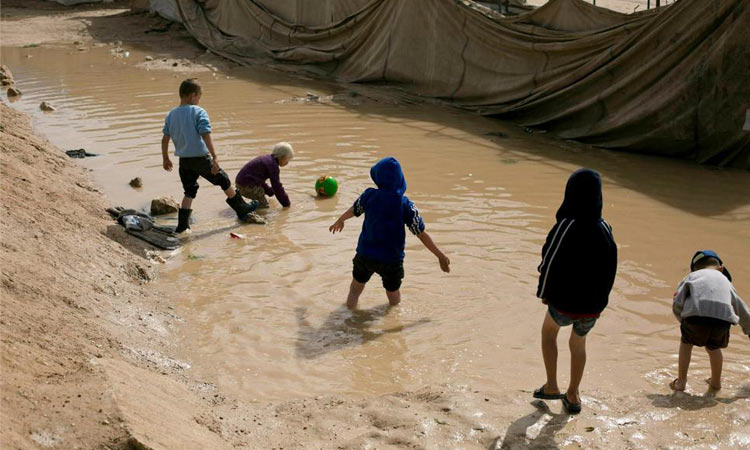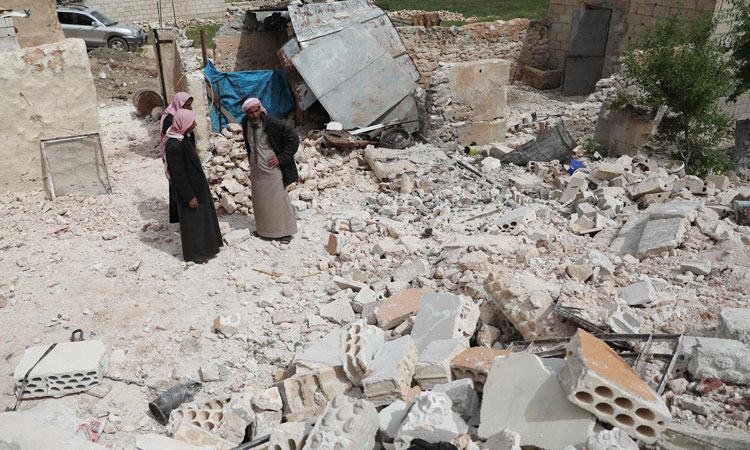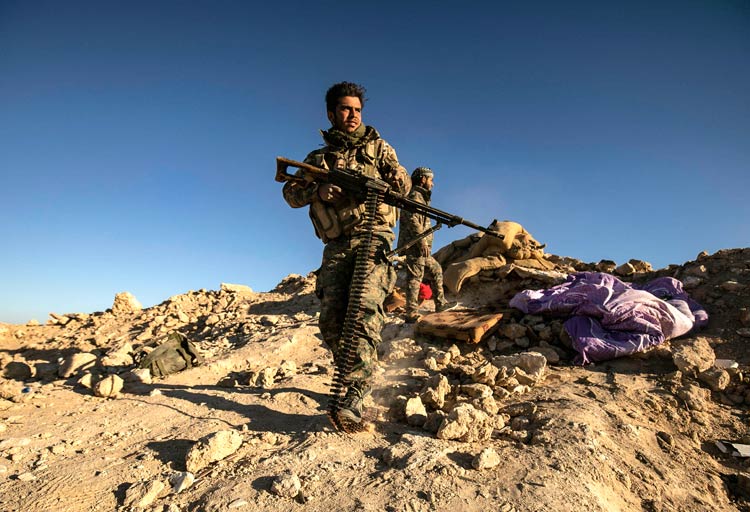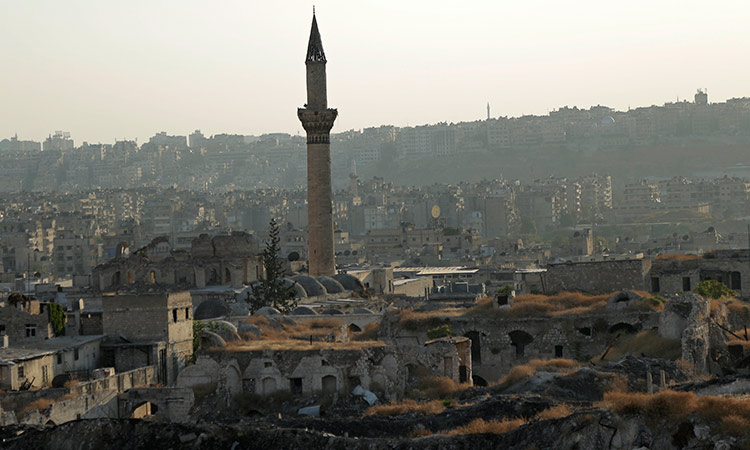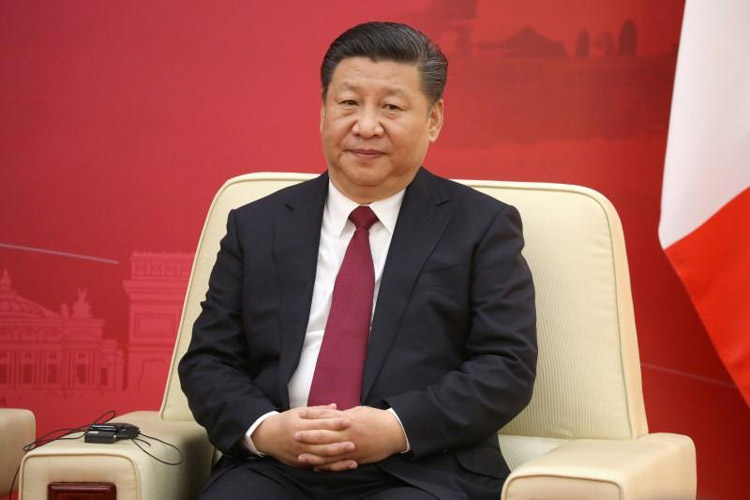Being short-changed
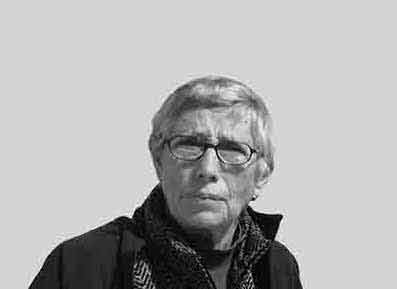
Michael Jansen
The author, a well-respected observer of Middle East affairs, has three books on the Arab-Israeli conflict.
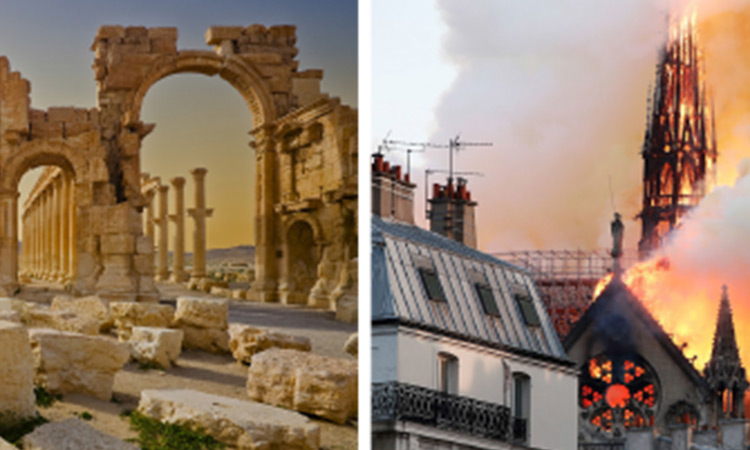
External funding has not been made available for the Greco-Roman ruins of Palmyra and Krak des Chevaliers. / The global grief shown towards the destruction of Notre Dame has been missing when it comes to the wreckage of the treasures of the ancient Levant, Mesopotamia and Muslim empires.
A friend recently remarked that the outpouring of grief and empathy from world leaders, peoples, and media over the destruction by fire of the roof of the 12th-13th century Notre Dame Cathedral in Paris has greatly exceeded the outcry over the destruction by war and Daesh of more or equally historically, culturally, and artistically important religious and ancient monuments in Syria and Iraq. The list of destroyed and wounded churches, mosques, markets and monuments in Syria alone is 43 pages long.
The only time the destruction of Syrian and Iraqi monuments raised a stir was in 2015 when Daesh brought down the 2,000 year old the Baalshamin and Bel temples in Syria’s Palmyra and bulldozed the remains of the Assyrian palace in Iraq’s 3,350-year-old Nimrud.
So far, more than $1 billion (Dhs3.6b) has been raised to reconstruct Notre Dame while funds are not available to simply stabilise the hundreds of damaged religious buildings and thousands of years-old sites in this region.
The flames leaping from the roof of the French cathedral, regarded by many as the symbol of Paris, were viewed for hours on French, British and US satellite television channels. The fire headlined in newspapers worldwide. Stricken Parisians, politicians, and experts were interviewed about their feelings as they saw the fire bring down the 19th century spire. The large sums for reconstruction were provided by French industrialists.
British specialists who have experience in similar disasters have offered their aid in restoring Notre Dame although France has professionals trained in many of the tasks required for the restoration of old buildings damaged by fires and the water used to put out the flames. French President Emmanuel Macron has vowed to complete the job in five years. Experts argue the fabric of the building can be restored but the interior needs many years.
Meanwhile, the Western powers and fund raisers ignore the 21st century wreckage of the treasures of the ancient Levant, Mesopotamia and the Muslim empires, pillaged for cultural treasures during the Western colonial period.
The UN Development Programme (UNDP) invested a relatively small sum in the reconstruction of the ancient souq in the Old City of Homs and the Christian town of Maaloula. Both had been occupied by al-Qaeda’s Jabhat al-Nusra and anti-government rebels. Rubble has been cleared from the streets and Maaloula’s Orthodox and Catholic convents have been restored, largely with funds from their respective churches.
The interior of the Khalid ibn al-Walid mosque in Homs has been beautifully restored by local craftsmen financed by a Chechen foundation which is also funding the rebuilding of the centuries old Umayyad Mosque of Aleppo, which was mauled during fighting and the unique square minaret brought down. The mosque is said to enshrine the remains of Zecharia, father of John the Baptist, who baptised Jesus in the waters of the Jordan River and is revered in both Islam and Christianity.
The Aga Khan Foundation has tackled reconstruction in Aleppo’s Old City. External funding has not been made available for the Greco-Roman ruins of Palmyra and Krak des Chevaliers, the largest Crusader castle in the region where Syrian and Hungarian archaeologists have been tidying up and mapping out repairs in the hope money will be donated.
The New York based World Heritage Fund, which before the post-2011 war in Syria and Iraq invested in projects in both countries, has not done so. The Fund did join an initiative to deal with damage and threats to ancient monuments in Iraq caused by the 2003 US war on that country. During the conflict and occupation no effort was made by Washington to spare that country’s ancient, medieval and modern treasures. In April 2003, as Baghdad fell to the invading US and British armies, the Iraq Museum, the depository of thousands of years of civilisation, was looted while a US tank was parked in the street nearby.
UNESCO has partially addressed the destruction wrought on Iraq’s Mosul during the US-led war to liberate the city from Daesh. In early 2018 UNESCO launched a campaign to “Revive the Spirit of Mosul.” The UAE has pledged $50 million (Dhs183m) for the reconstruction of al-Nouri mosque and its emblematic leaning al-Hadba Minaret, originally built in the 12th century and repeatedly renovated.
Residents of Mosul’s Old City, who form the mosque’s congregation, have been given no assistance for rebuilding their homes. Most projects have focused on clearing streets and restoring schools, electricity lines and water pipes. A $400m (Dhs1.469m) reconstruction fund was established in 2015, before the defeat of Daesh, but Mosul received only $225,000 (Dhs826,470) in 2017 and nothing in 2018. Mismanagement and corruption reign. Without the faithful, a mosque — or church — becomes a museum.
Reverting to Notre Dame: CBS News in the US dubbed Notre Dame, “the world’s church,” which it is. It is, however, the world’s church not only because it is reverenced around the globe but because its architects and builders incorporated features from Middle Eastern churches and mosques. The cathedral’s towers, rose windows, pointed arches, and spire are borrowed from Byzantine and Islamic houses of worship. This being the case, more consideration should be accorded to the original mosques, churches and other emblematic buildings which influenced both Gothic and Romanesque styles in Europe and across the world.
The Notre Dame-fixated Western world should bear responsibility for reconstructing ancient, Islamic and Christian sites in Iraq and Syria since the 2003 US war on Iraq unleashed al-Qaeda and Daesh extremists who have done so much damage to the heritage of this region and the world.
Western powers should also make it clear to Israel that it must restrain Jewish religious extremists who seek to raze al-Aqsa mosque in Jerusalem, the third holiest place of worship for Muslims after Mecca and Medina, in order to erect a Jewish temple in the Haram al-Sharif. If not curbed they would also destroy the magnificent Dome of the Rock, depriving the Jerusalem skyline of its gleaming golden dome and eradicating a potent symbol of the Muslim and Arab presence and of Palestinian identity in the occupied city which Israel claims as its exclusive property.
